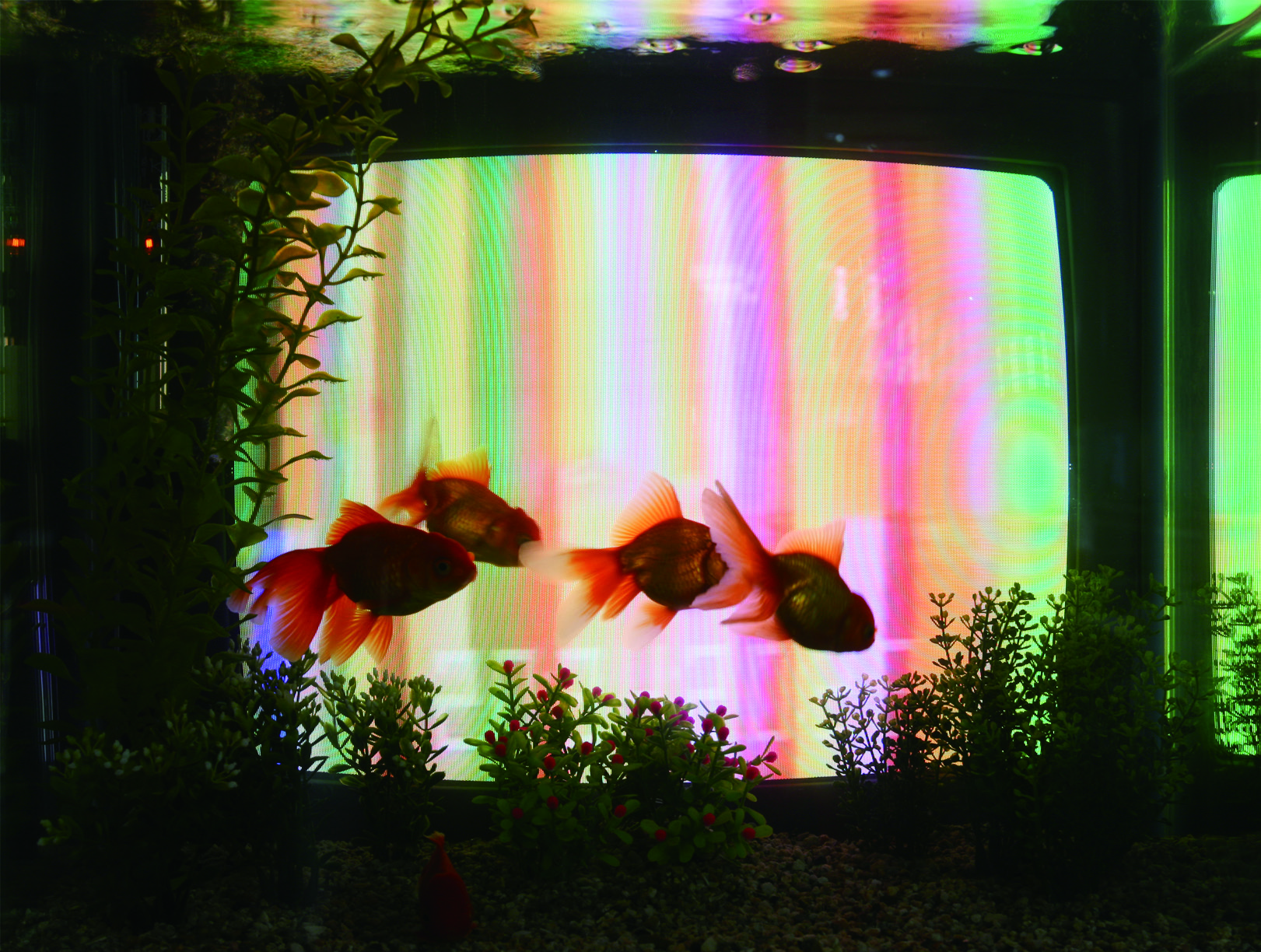Twenty-four television sets are placed behind a row of twenty-four fish tanks. Live fish swim around inside the fish tanks while a series of moving images are played on the TV monitors, such as dancing Merce Cunningham, swimming fish in the sea, and a flying airplane in the sky. By overlapping the fish tank with a television monitor, real fish and the image of fish merge into a single space and time. Cunningham is dancing with a fish; the fish is swimming in the sky; and an airplane is floating in the sea. The visual composition, in which a fish tank becomes a monitor and vice versa, leads viewers to look at the TV screen from a fresh perspective as well as to recognize the television monitor as a frame that constrains the subject matter. Dealing with the relationship between realities and representations with the frame of screens lying in between, Nam June Paik often employed elements from nature. By juxtaposing the “true-to-life” qualities of images created by technology with the “aliveness” of nature in reality, Paik sought to emphasize the coexistence of nature and technology, rather than bring attention to their differences.





